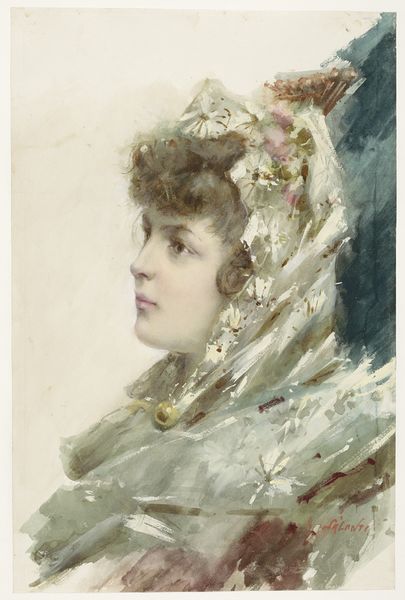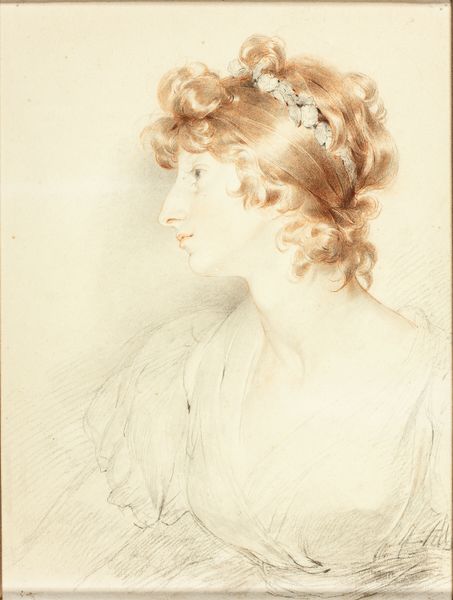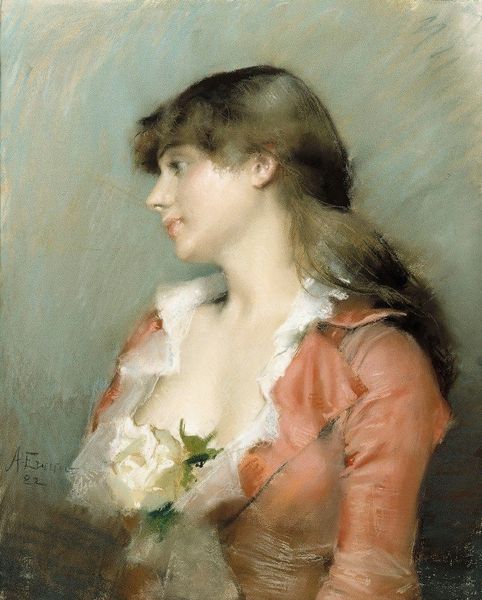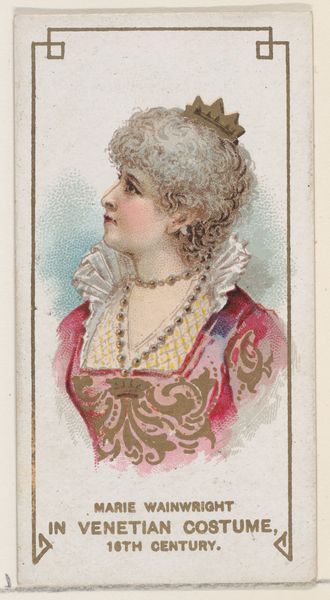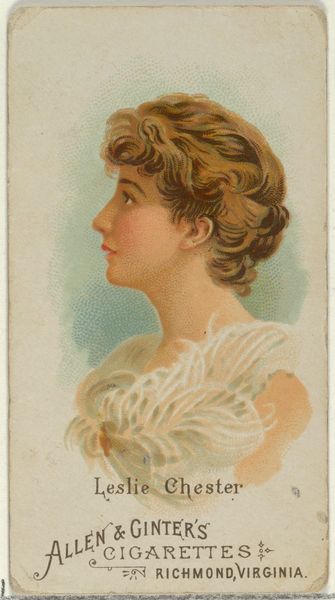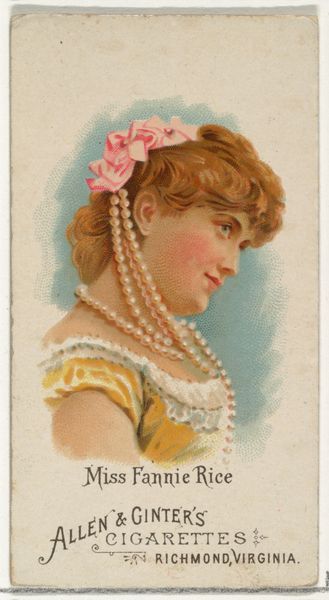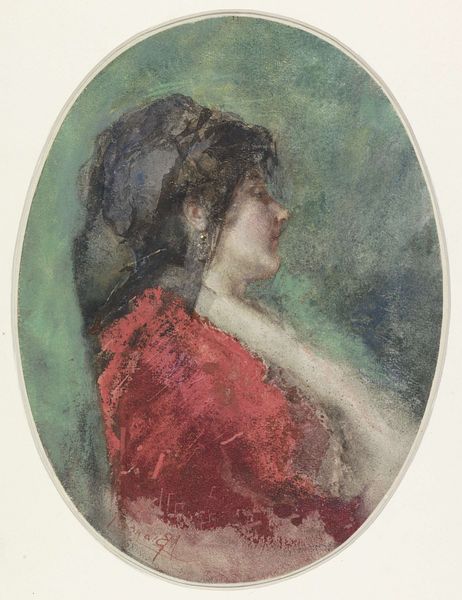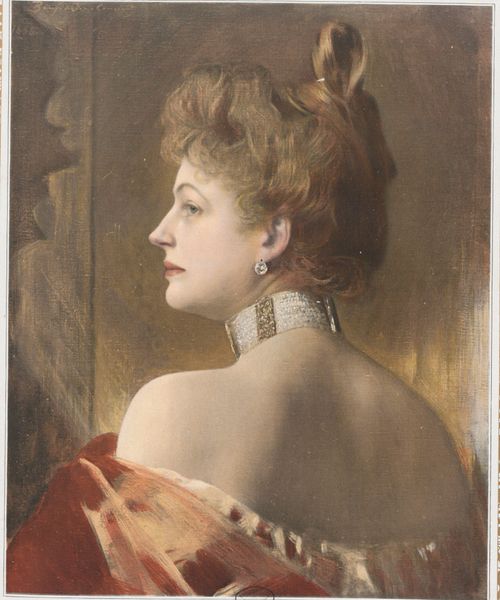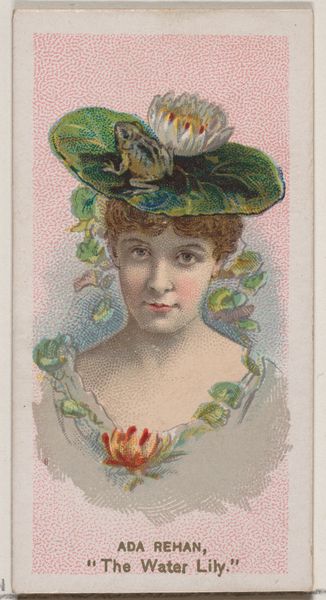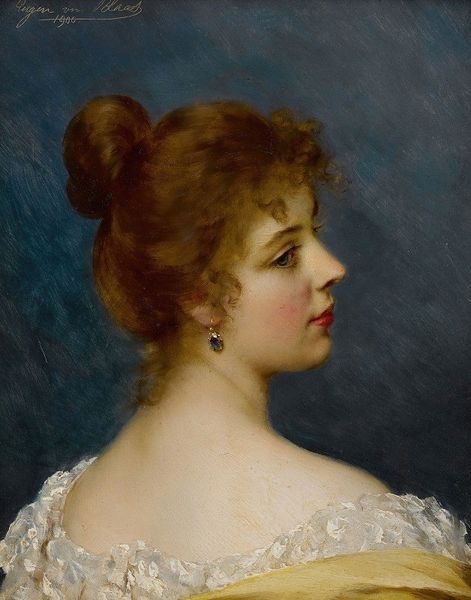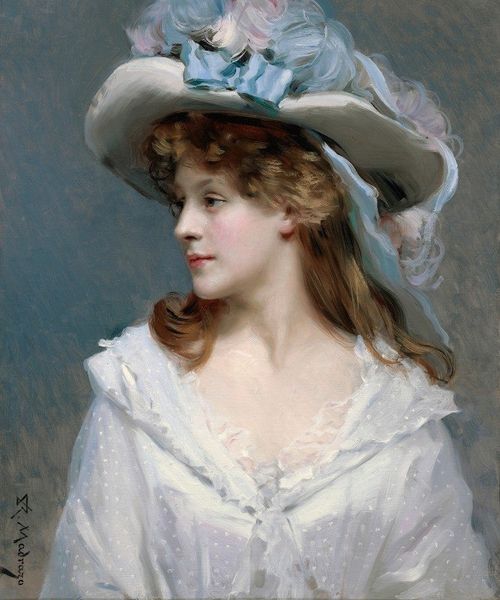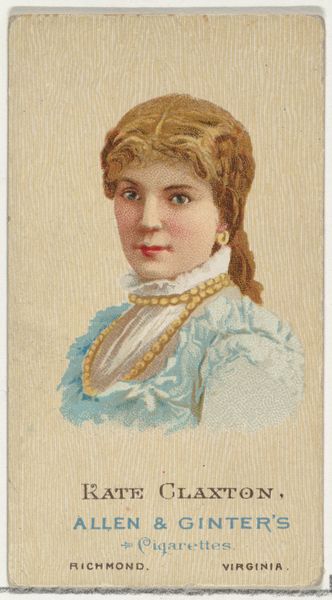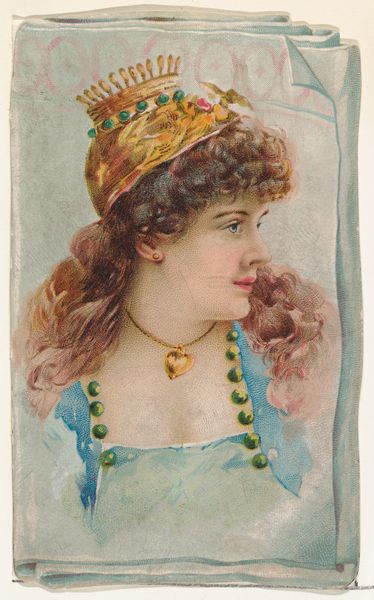
gouache, watercolor
#
portrait
#
gouache
#
gouache
#
watercolor
#
intimism
#
romanticism
#
watercolor
Dimensions: height 510 mm, width 333 mm
Copyright: Rijks Museum: Open Domain
Editor: Here we have A. Salanti's "Buste van een jonge vrouw, in profiel naar rechts," created sometime between 1800 and 1892. It's rendered in watercolor and gouache. The portrait’s so delicate; the fur looks incredibly soft, but I find myself wondering about the story behind the materials themselves. What catches your eye? Curator: Well, beyond the image itself, I'm drawn to consider the materials: watercolor and gouache. These are inherently more accessible than oils, suggesting a shift in the art market and who could participate in its production and consumption. This was made in the 19th century when manufacturing and mass production rose exponentially. Editor: So, you see the medium as influencing not just the aesthetic, but also the social and economic landscape? Curator: Precisely! Consider the pearls and the fur. Are these real or painted representations of status? It raises questions about consumption, labor and access to resources, particularly for women in that era. Who produced these materials? How were they obtained and made accessible? Editor: It's interesting how looking at the materiality opens up those avenues of thought. The pearls become more about colonial exploitation than simply beautiful ornaments. Curator: Indeed. Even the artist's signature at the bottom. Think about the labor and materials required to produce that ink, the pen, and even the paper itself. Each element tells a story. Does that affect your view of this portrait at all? Editor: Absolutely! It layers a whole new level of meaning onto something that, at first glance, seems purely aesthetic. I definitely learned a lot from that deeper dive into materiality! Curator: As did I! It’s rewarding to re-examine art through the lens of material history.
Comments
No comments
Be the first to comment and join the conversation on the ultimate creative platform.
